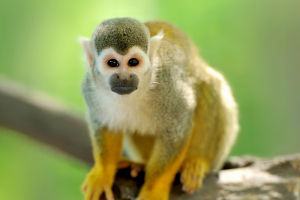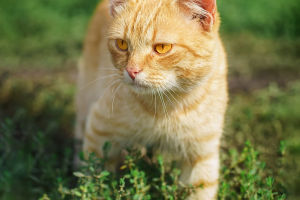Climate change is having a profound impact on global ecosystems, and polar bears, a polar species, are facing particularly serious threats.
As the top predator in the Arctic, the survival status of polar bears directly reflects the health of the Arctic environment.
As global warming intensifies, polar bears face increasingly severe challenges, which not only affect their survival but also have a knock-on effect on the entire Arctic ecosystem.
Polar bears primarily inhabit the Arctic ice cap, and they rely on sea ice as their primary platform for hunting seals. Reducing sea ice cover is one of the most immediate threats to polar bears from climate change.
Rising global temperatures are causing polar ice to melt at an accelerated pace, significantly reducing polar bear habitat. According to research data, the area of Arctic sea ice has decreased by about 40% since 1979.
This reduction in sea ice not only limits the hunting areas of polar bears but also forces them to migrate to farther and more dangerous areas in search of food.
Polar bears' main food source is seal species such as ringed seals and bearded seals, which often rely on sea ice for breeding and habitat. The disappearance of sea ice directly threatens the survival of these seals and disrupts the polar bear's food chain.
When polar bears cannot hunt enough prey, they lose weight and have lower fertility rates. Research shows that the weight and health of polar bears have declined significantly in recent years, especially during the summer, when many polar bears have to endure prolonged periods of starvation.
Polar bear reproduction is also affected by climate change. Female polar bears usually enter their dens during the winter to give birth and nurse their cubs in the spring. However, warm winters and reduced sea ice prevent polar bears from finding suitable dens, which affects their reproductive success.
In addition, climate change may lead to instability in polar bear breeding seasons, affecting cub survival rates. The challenge of finding suitable denning areas is exacerbated by the early melting of sea ice, forcing mothers to abandon their dens prematurely and threatening the survival of the cubs.
The threat of climate change to polar bears is not limited to the Arctic. It is also having a profound impact on global ecosystems and climate patterns. Melting ice caps in the Arctic will cause global sea levels to rise, changing ocean and climate patterns and thus affecting global weather systems.
These changes also have indirect effects on other ecosystems and biological species. The loss of sea ice also contributes to the albedo effect, where less ice leads to more absorption of solar radiation, further accelerating global warming and creating a feedback loop that exacerbates climate change.
In response to these challenges, the international community is taking a series of measures to protect polar bears. Global climate action aims to reduce greenhouse gas emissions and slow the rate of global warming.
The Paris Agreement, for example, seeks to limit global temperature rise to well below 2 degrees Celsius, with efforts to keep it under 1.5 degrees Celsius. These efforts are crucial for the survival of polar bears, as even small temperature increases can have significant impacts on their habitat.
Establishing more protected areas and implementing strict hunting management measures can also help protect polar bears and their habitats.
Several countries, including the United States, Canada, Greenland, and Norway, have created protected areas where polar bears can hunt and breed without the threat of human interference.
These protected areas are vital for ensuring that polar bears have the space they need to thrive in an increasingly challenging environment.
Scientific research and monitoring efforts are also ongoing to better understand the ecological needs of polar bears and develop more effective conservation strategies.
Researchers use satellite tracking, genetic studies, and field observations to gather data on polar bear populations, their movements, and their health. This information is crucial for informing conservation policies and ensuring that efforts to protect polar bears are based on the best available science.
The threats to polar bears from climate change are multifaceted. Global warming is exacerbating these threats, leaving polar bears facing major survival challenges.
To protect this iconic species and its habitat, we need to take coordinated global action to address the challenges posed by climate change and create a safer environment for polar bears and other polar creatures.


